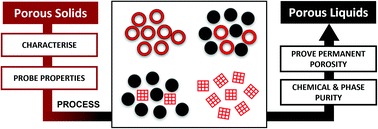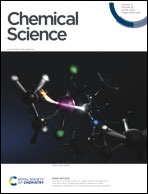Porous liquids – the future is looking emptier
Abstract
The development of microporosity in the liquid state is leading to an inherent change in the way we approach applications of functional porosity, potentially allowing access to new processes by exploiting the fluidity of these new materials. By engineering permanent porosity into a liquid, over the transient intermolecular porosity in all liquids, it is possible to design and form a porous liquid. Since the concept was proposed in 2007, and the first examples realised in 2015, the field has seen rapid advances among the types and numbers of porous liquids developed, our understanding of the structure and properties, as well as improvements in gas uptake and molecular separations. However, despite these recent advances, the field is still young, and with only a few applications reported to date, the potential that porous liquids have to transform the field of microporous materials remains largely untapped. In this review, we will explore the theory and conception of porous liquids and cover major advances in the area, key experimental characterisation techniques and computational approaches that have been employed to understand these systems, and summarise the investigated applications of porous liquids that have been presented to date. We also outline an emerging discovery workflow with recommendations for the characterisation required at each stage to both confirm permanent porosity and fully understand the physical properties of the porous liquid.

- This article is part of the themed collections: Most popular 2022 supramolecular chemistry articles and 2022 Chemical Science Perspective & Review Collection


 Please wait while we load your content...
Please wait while we load your content...